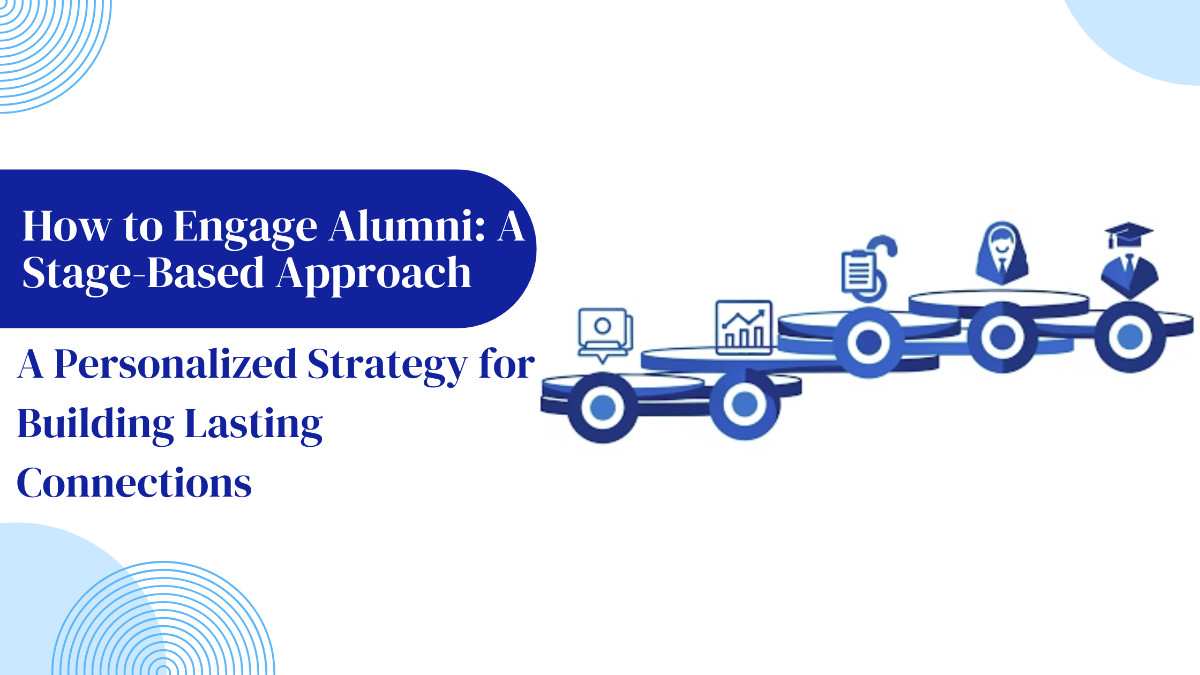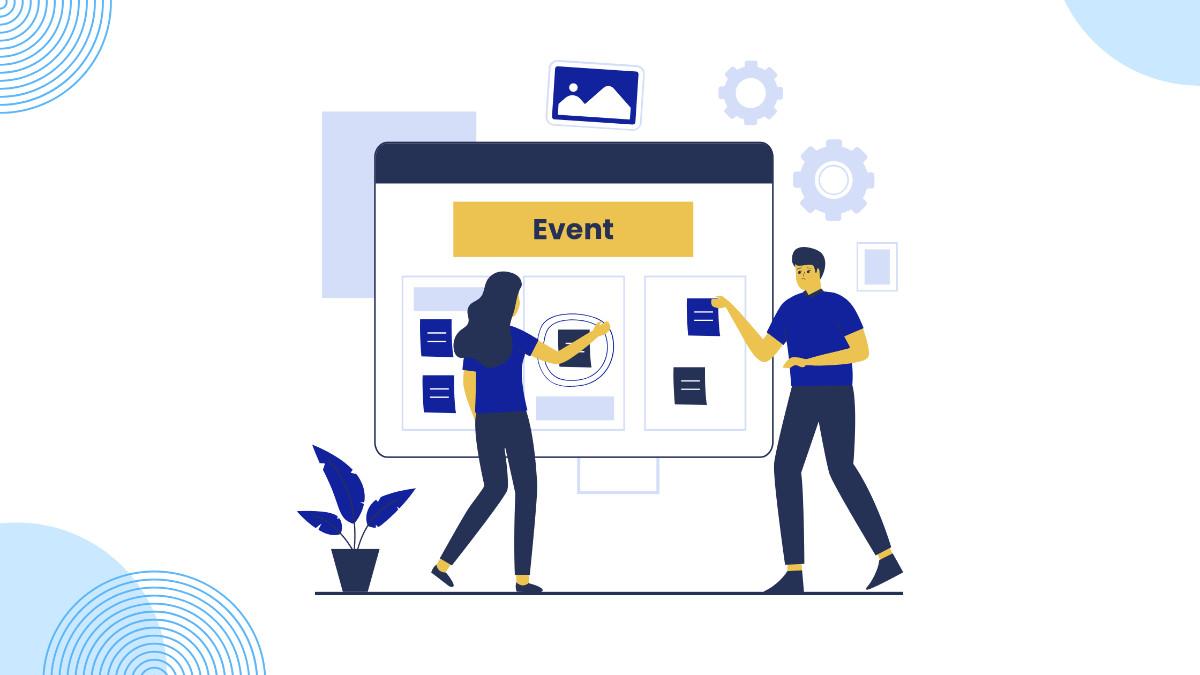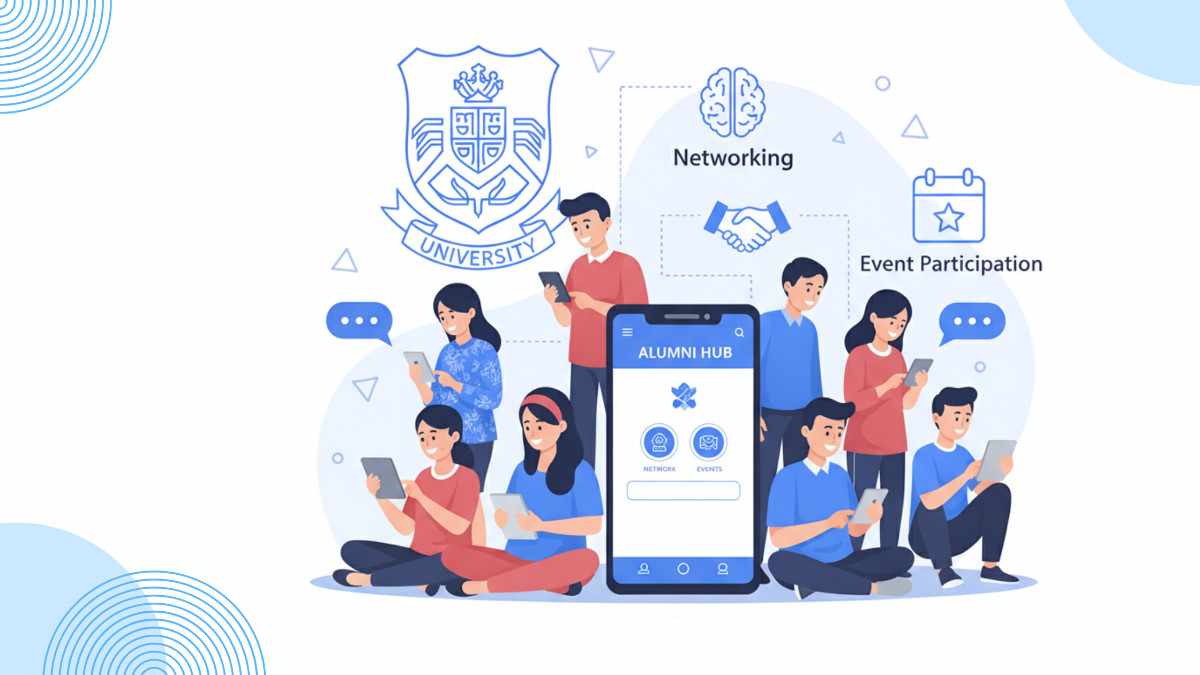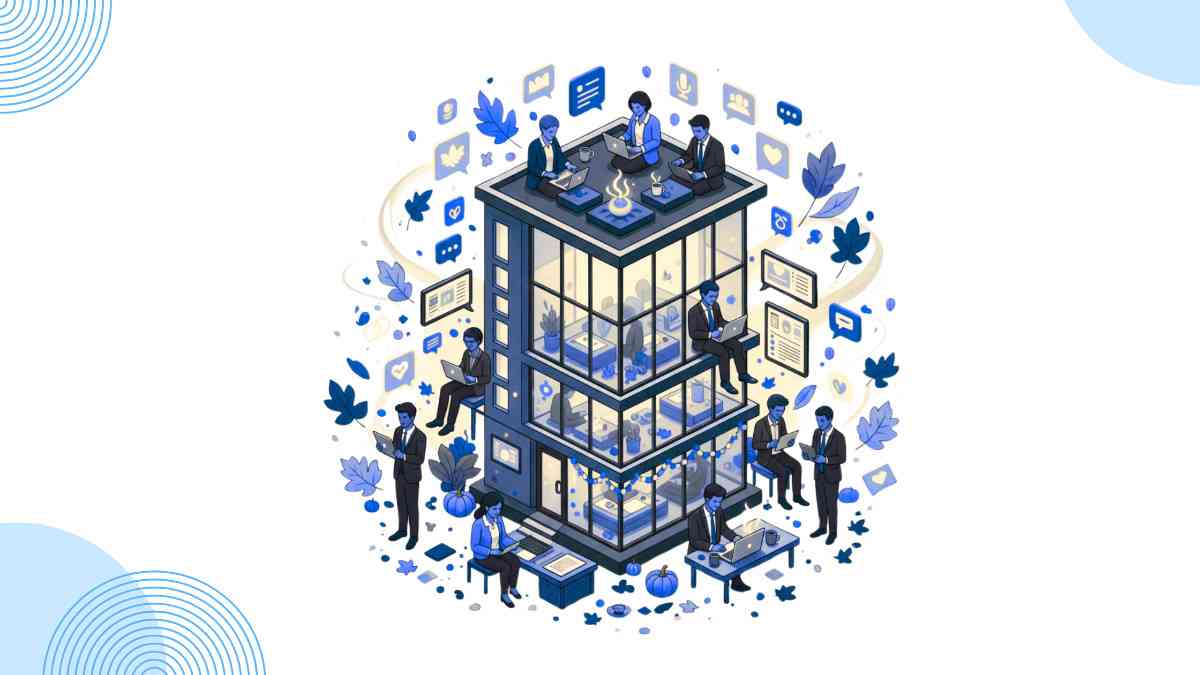How to Engage Alumni: A Contemporary, Stage-Based Approach
Develop an alumni engagement strategies tailored to different alumni stages for stronger connections and long-term involvement.

Alumni involvement is not a one-time-a-year newsletter or a boilerplate reunion invitation. It’s a relational strategy that respects where the alumni are in their life’s journey, not where they began.
Why is this so?
Many institutions make a common mistake — they treat alumni as one big, uniform group.
But alumni aren’t all the same. They go through different stages in life, and their needs, interests, and availability change over time.
In this blog, we explore a modern, stage-based way to engage alumni.
This approach helps you move beyond one-size-fits-all outreach and build lasting, meaningful connections with your alumni community.
Why a Stage-Based Approach Is Important?
Think of your alumni network as a collection that matures and expands over time.
A recent alumnus might be looking for advice, contacts, or merely an excuse to keep in touch.
A mid-career professional would be interested in visibility or industry access.
A high-level alumnus would likely be more concerned about legacy, recognition, or a significant contribution.
How they need you to perform—and what you can expect from them—differs by phase.
A blanket email campaign, no matter how elegantly worded, won’t appeal to all of them. That’s why institutions that employ a personalized, lifecycle-based alumni approach are experiencing increased engagement, greater volunteerism, and more robust donor relations.
Stage-Based Alumni Engagement: A Tested Model
🧭 Discover Your Alumni Stage
Answer a few quick questions to find out which alumni stage you belong to.
As students age, so too do alumni. Depending on behavioral characteristics, employment stability, and affective attachment, alumni typically fall into one of three broad categories:
- Loyalists: Early-career graduates (0–5 years after graduation)
- Hustlers: Mid-career professionals (5–15 years)
- Contributors: Senior alumni (15+ years)
- High emotional attachment
- Limited funds, eager to volunteer
- Seek connection & career guidance
- Busy, professionally stable
- Value networking & visibility
- Prefer flexible, digital formats
- Financially established
- Driven by legacy & recognition
- Willing to mentor or donate
Let’s analyze both groups and the most effective method to employ.
Phase 1: Loyalists
(Fresh Graduates and Young Professionals, 0–5 Years Post-Graduation)
Traits:
- Intense emotional attachment to the institute
- Limited financial resources
- Strong desire to engage
- Seeking belongingness and early career guidance
What Works:
221. Volunteer Opportunities
Provide Loyalists with an opportunity to pay back—not in money, but in time and labor. Provide them with an opportunity to be:
- Student orientation guides
- Event volunteers
- Campus ambassadors at education fairs
These positions make alumni feel needed and appreciated.
2. Peer Mentorship
Loyalists are close to the student experience to offer real-life guidance. Implement alumni-student mentorship initiatives where new graduates offer real-life guidance on classes, job seeking, or living after college.
3. Nostalgia and Merchandise
Rekindle the relationship through customized merchandise, online yearbooks, or “Back to Campus” deals. Not only do they evoke pride—they create tangible points of identification and belonging.
Early engagement is critical. Research indicates that graduates who remain engaged during the initial five years are more apt to be lifelong donors.
Stage 2: Hustlers
(Mid-Career Alumni, 5–15 Years after Graduation)
Characteristics:
- Distracted by career advancement and family duties
- Time-starved but professionally stable
- Need professional relevance and networking
What Works:
1. Career Development Counseling
Develop your mid-career alumni professionally. This may involve:
- Industry networking mixers
- Speaking slots at panels or lectures
- Leadership highlights in alumni publications
You’re not just assisting them—you’re also becoming the facilitator of lifelong success for your institution.
2. Digital and Flexible Engagement
Mid-career professionals are busy. Provide on-demand value by:
- Webinars with expert alumni
- Podcast-style interviews
- Virtual alumni communities based on industries or interests
Flexibility is everything—respect their time, and they will be there when it matters.
3. Nostalgia-Driven Campaigns
Welcome Hustlers back into the emotional life of your institution. Consider:
- Virtual class reunions by year
- Founders’ Day festivities with vintage pictures and yearbook facts
- “Where Are They Now?” segments to promote friendly competition
At this point, alumni are not simply seeking events—they are seeking meaningful connections in alignment with their identity and field of specialization.
Stage 3: Contributors
(Senior Alumni, 15+ years after graduation)
Traits:
- Economically prosperous, typically in positions of authority
- Wishing to contribute in meaningful ways
- Driven by legacy, recognition, and influence
What Works:
1. Recognition and Legacy Building
Senior alumni desire their giving—professional, philanthropic, or personal—to be noticed. Engage them through:
- “Hall of Fame” awards showcased in print and web content
- Legacy scholarships dedicated to exceptional alumni
- Alumni guest lectureships or board membership
2. High-Touch Reunions and Gatherings
Stage special events that are in the spirit of a legacy retreat rather than a college function. Whether it is a Silver Jubilee, an Alumni Summit, or a donor appreciation dinner, design the experience with connection and contribution as the motivation.
3. Personalized digital recognition
Apply technology to find contributors at scale:
- Spinning “Alumnus of the Month” on your site
- Glowing alumni ID cards highlighting achievements
- Testimonial videos of their experiences
Recognition is not ego—it’s affirmation. And affirmed alumni are long-term donors and champions.
3. How to Use a Stage-Based Model
Implementing this model doesn’t require you to have a whole new team or budget. Here are four ways to make it realistic:
Divide Your Alumni Database
Segment users by graduation year, industry, location, or previous attendance based on your CRM, email list, or alumni site. If you’re not sure, ask. Use speedy surveys or social listening tools to discover clusters.
Personalize Messaging
Send varying campaigns based on the segment behavior. A hustler may enjoy LinkedIn-based updates, but a loyalist would be more influenced by Instagram or WhatsApp interactions.
Use Technology Responsibly
Platforms like AlmaShines make it simpler to automate personalized messaging, set up mentorship partnerships, and monitor what alumni are reading.
Monitor Real Metrics
Don’t just monitor email opens or clicks. Monitor:
- Donate time
- Mentoring sessions
- Event participation
- Referrals and fundraising
These measures give a better indication of real-world interaction.
Final Thoughts
Alumni engagement is not about more events or emails—it’s about better alignment.
The institutions that establish strong alumni networks will be those that acknowledge where their alumni are in life and meet them on that basis. Whether it’s a new graduate seeking mentorship or a seasoned executive seeking legacy projects, meeting them where they are establishes trust and deepens commitment.
It’s not a campaign—it’s a relationship that endures. And it begins with understanding that your graduates, just like your students, never really stop growing.
Are your alumni engagement efforts aligned with their current life stages?
Frequently Asked Questions (FAQs)
Alumni engage through mentorship, donations, networking events, reunions, and digital communities, depending on life stage and interest.
Segment communication, personalize outreach, recognize milestones, host relevant events, and track real participation.
By tailoring programs to alumni life stages, offering career support, celebrating success, and using digital platforms for ongoing interaction.
Alumni networks support hiring, referrals, thought leadership, industry collaborations, and brand-building opportunities.
By inviting alumni for mentorship, guest talks, job-shadowing, and showcasing career journeys that inspire students.
Targeted email campaigns help share updates, invite participation, highlight alumni, and drive engagement with tailored content.
Suggested Blogs
Let’s discuss the idea
Join hundreds of companies transforming their corporate communities with Almashines






